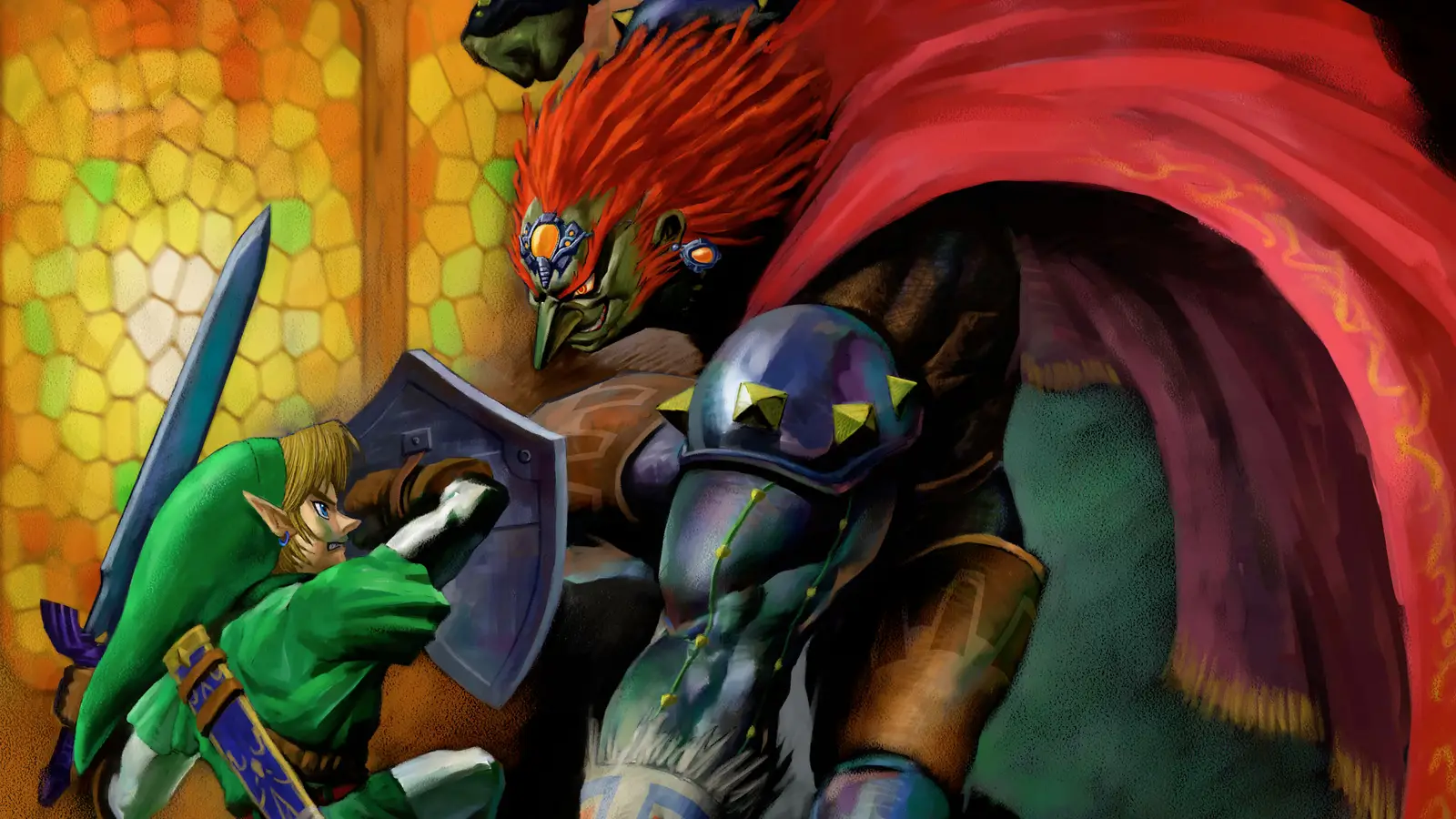
When I first played The Legend of Zelda: Ocarina of Time, I was way too young to actually accomplish anything. But that didn’t stop the aimless wandering through Hyrule that led to my lifelong obsession with the 1998 classic. Despite its now-rudimentary appearance and relatively clunky gameplay, Ocarina of Time remains a timeless story, one that only grows more tragic as it gets recontextualized by my own dwindling youth.
Where I once viewed Link’s emergence from his seven-year imprisonment in the Sacred Realm as a triumphant turn of fate, giving me renewed potential in my quest against Ganondorf, I now perceive it as a cruel twist in Link’s life. Seven years were stripped from him, then handed back as a burden when he is sent back to his childhood by Zelda at Ocarina’s conclusion. My favorite moment in the game, Sheik’s soliloquy in the Ice Cavern, alludes to Link’s lost time, but a much smaller, easily missed detail foreshadows Link’s tragic fate long before the Master Sword is pulled.
The Drawing On Link’s House
A Child’s Fantasy
At the base of Link’s tree house in Kokiri Forest is a drawing of a swordsman fighting a monster. At face value, it’s a charming display of a child’s imagination, and a clever bit of foreshadowing from the developers. But Ocarina of Time is a game that harps on Link’s destiny. He was brought to the Great Deku Tree by his dying mother, and Link was permitted to live among the Kokiri – themselves tragic figures – only because he had a larger purpose in Hyrule’s eternal conflict.
Link is one of gaming’s most famous characters, yet he is largely ill-defined as an individual, primarily known for being simply, generically courageous. This sketch, which was presumably made by Link, is one of the few glimpses into who he is as a person. It’s an indication that he has the predisposition of a hero, a characteristic he’s been assigned by destiny, but one that’s nonetheless evidenced by his actions throughout Ocarina.
As a child, unaware of his true heritage as a Hylian, Link seemingly dreams of being a savior, but it’s a retrospectively tragic aspiration seeing how his dream becomes a reality. Link lives roughly 10 years of his life in the most idyllic circumstances possible in Ocarina of Time’s version of Hyrule, sequestered from the ramifications of the Hyrulean Civil War that caused his forgotten mother’s death.
After Ganondorf violates the solitude of Kokiri Forest and curses the Deku Tree, Link, still a boy, is thrust toward his destiny. In short order, he must retrieve the Master Sword, which, when drawn, whisks him seven years into the future. From his perspective, the Hyrule he was just beginning to know is destroyed in a matter of minutes. On his way to becoming the swordsman fighting the monster, Link has lost everything.
The Boy Who Fought The Monster
A Child’s Tragedy
Link’s drawing becomes prophecy, but its aftermath is likely not what he imagined as a child. In Ocarina of Time’s final scene before the credits roll, Zelda sends Link back in time after the Master Sword is returned to its pedestal. This creates two of the series’ infamous timeline branches (the third comes from alternate events where Ganon defeats Link), where one remains in the present, devoid of Link, but with Ganondorf sealed in the Sacred Realm, leading to The Wind Waker.
If we follow Link back to his childhood in the other timeline branch, the Hero of Time uses his foreknowledge of Ganondorf’s plot to warn the royal family, averting the crisis altogether. Link lives the rest of his life with practically no purpose, eventually embarking on a twisted, surreal journey in search of his fairy, Navi, in Majora’s Mask.
Navi is never found in Majora’s Mask, as Link is waylaid by the Skull Kid and brought to Termina. Majora’s Mask’s inciting incident has never been resolved.
The time travel that allows Link to wield the Master Sword and defeat Ganon ends up unraveling Link’s life. He personally became the swordsman and fought the monster, but when he’s sent back to his childhood, that fated conflict never occurs. His childhood fantasy, which he inscribed on the walls of his home, is a paradox: Link fought and defeated Ganon, but Ganondorf simultaneously never rose to power in his timeline.
It’s impossible that Link, the boy who fought Ganon, actually fought Ganon, because Ganon never existed in Link’s time.
Link laments his fate so deeply that his spirit is unable to rest, reappearing untold generations later in Twilight Princess as the Hero’s Shade. The Hero of Time appears as a skeletal apparition to the Hero of Twilight, bemoaning the fact that he was never able to rise to his station in his own timeline. The best the Hero’s Shade can do is pass on his knowledge.
Ocarina of Time’s end credits are notably jovial – the denizens of Hyrule come together to dance and celebrate the fall of Ganon, but this is in the timeline Link has disappeared from. An orphan was protected as an infant because he had been chosen by destiny, and fulfilling that destiny earned him less than nothing; the eventuality of his triumph was stricken from time.



